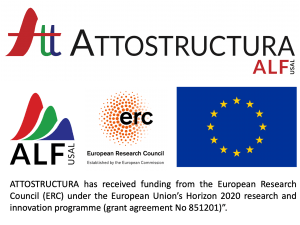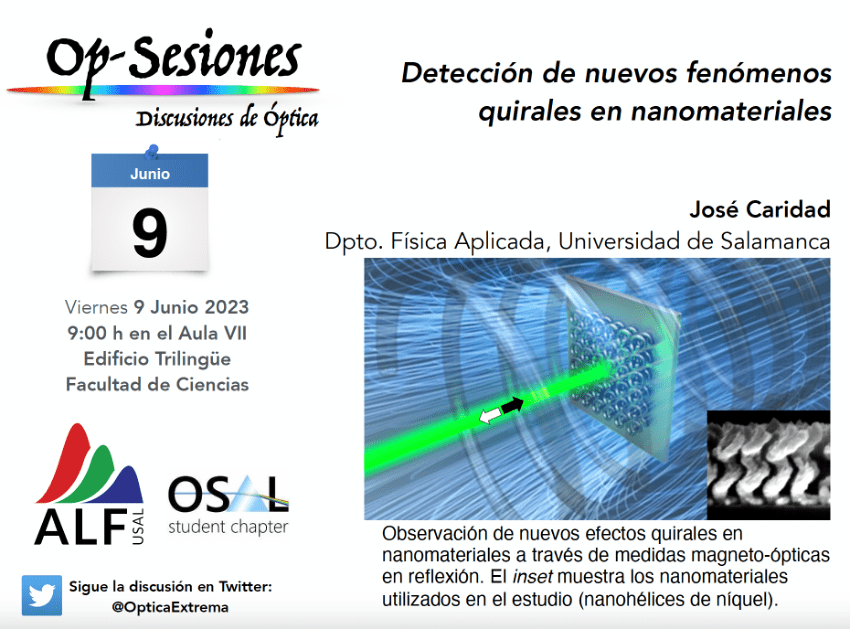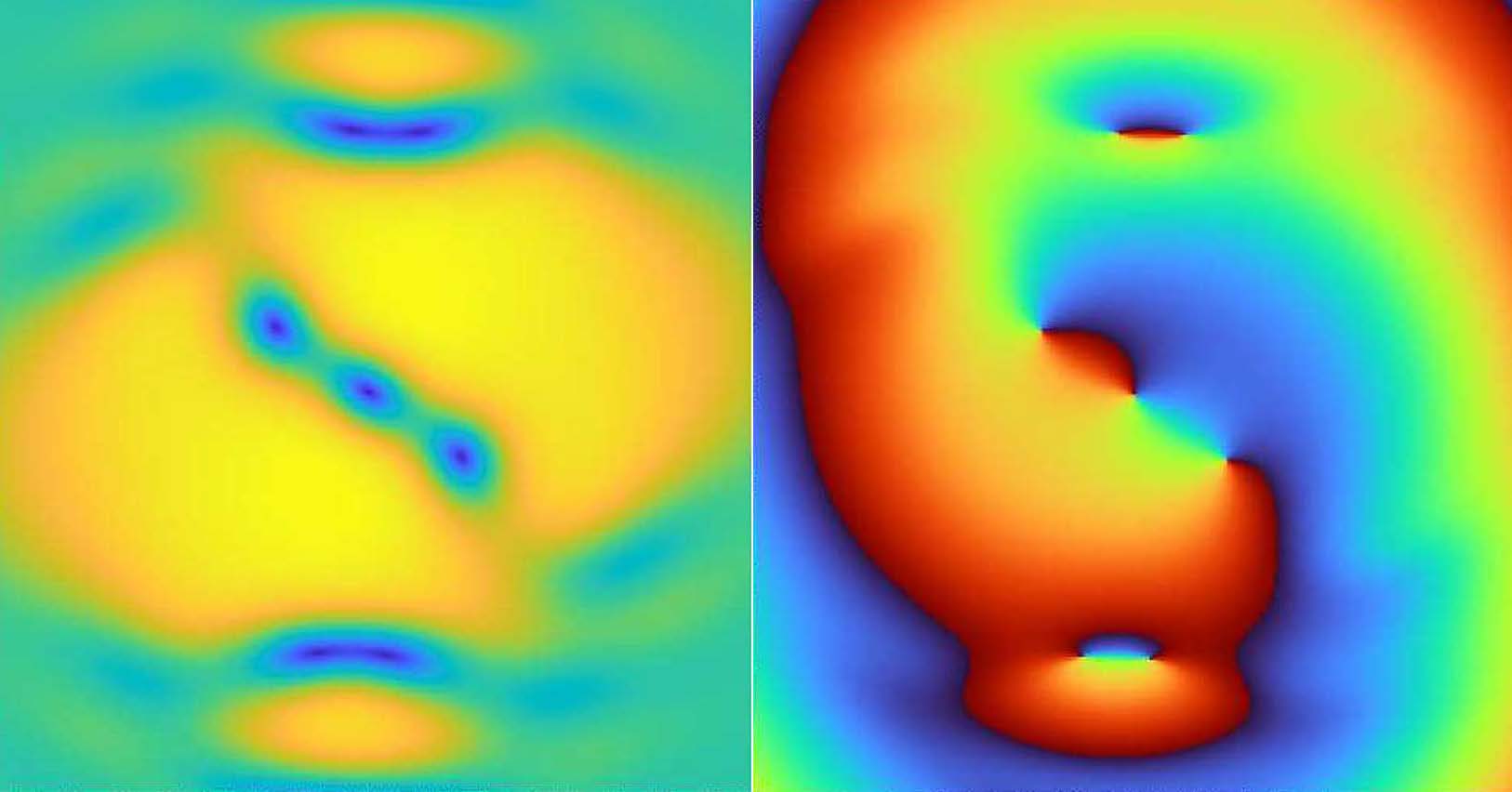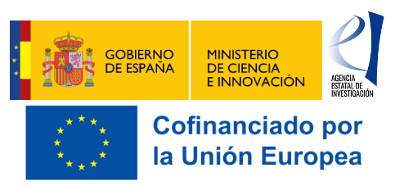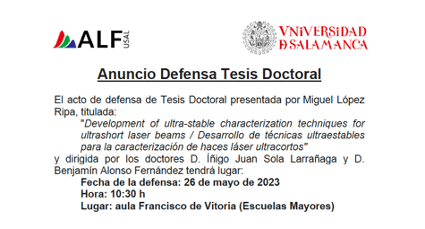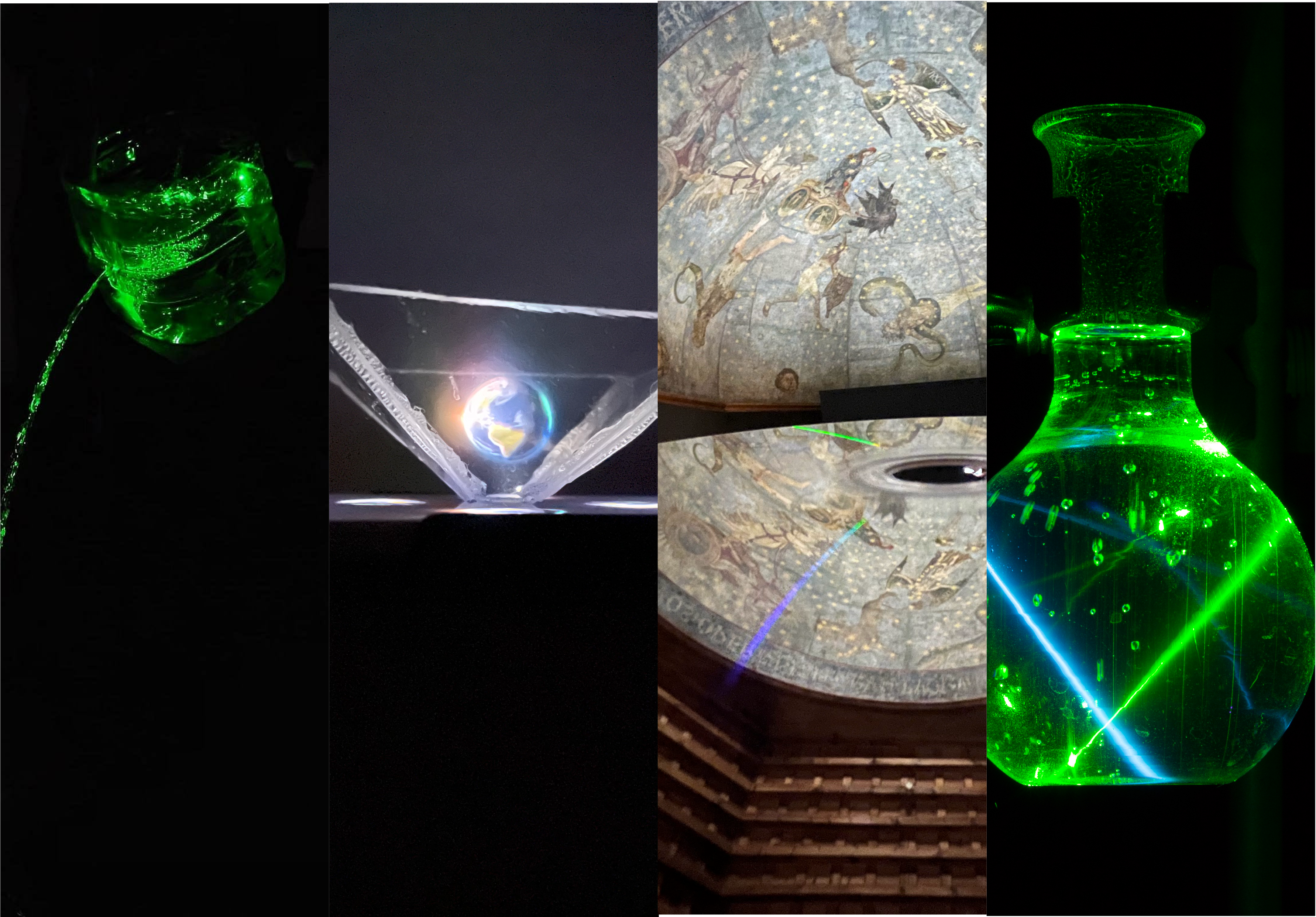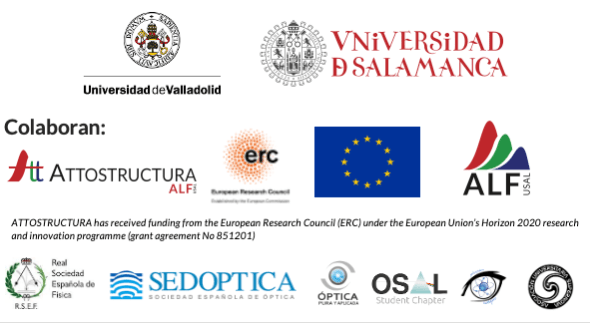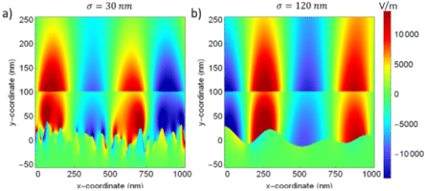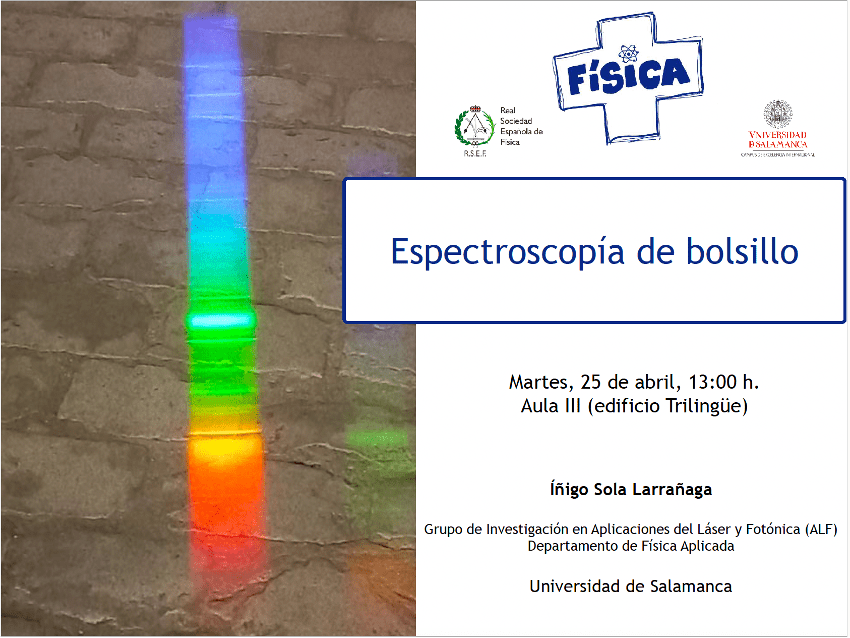Recently, researchers belonging to ALF, have been working in the development of a miniaturized spectrometer in collaboration with the European Space Agency, the Department of Physics and Swiss Nanoscience Institute (University of Basel), the Department of Chemistry and Applied Biosciences (ETH Zurich), the Swiss Federal Laboratories for Materials Science and Technology (Empa) and the Optics and Photonics Technology Laboratory (Ecole Polytechnique Fédérale de Lausanne, EPFL). The device belongs to the family of ultracompact Fourier Transform spectrometers, and it consist of a LiNbO3 chip in which a monomodal waveguide was fabricated with an optimized design to produce a light flux in the vertical direction. In the upper part of the chip a nano-detector (gold nanowire) was placed perpendicularly to the waveguide, together with a quantum dot HgTe nanolayer. The gold nanowire acts as scattering element, sensing the light confined in the waveguide. The nanolayer creates a photocurrent that can be measured. An external mirror placed at the output of the waveguide enables the creation of a standing wave that is monitorized by the nano-detector. The controlled motion of the mirror produces a spatial swept of the standing wave, thus obtaining the measurement of the confined intensity, from which the spectrum is extracted by Fourier transform.
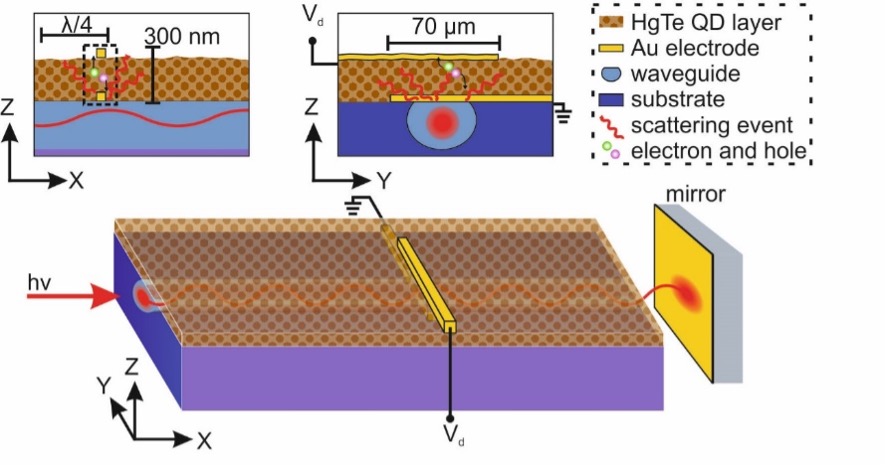
Scheme of the device
After fabrication, it has been demonstrated the efficient operation with resolution better than 50 cm-1 in the near infrared. The active part of the device has a tiny volume as small as 100 μm×100 μm×100 μm, and it could be integrated in the new generation of ultrasmall satellites.
More information at:
M. Grotevent et al., “Integrated photodetectors for compact Fourier-transform waveguide spectrometers” Nature Photonics 17, 59 (2023). https://doi.org/10.1038/s41566-022-01088-7
